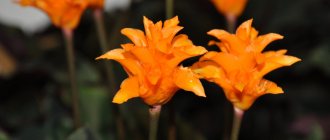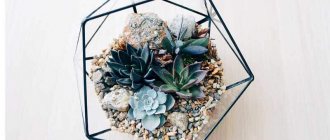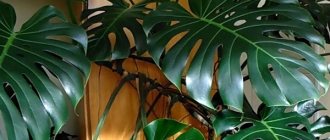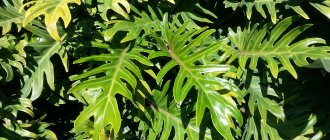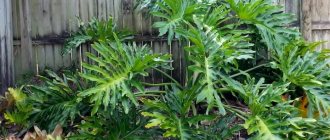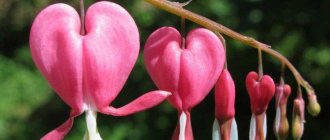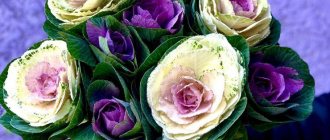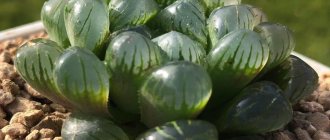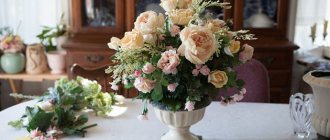Description and photo
A decorative vine that perfectly purifies indoor air. Fast growing, shade tolerant. The stems of the flower are densely dotted with green, slightly wrinkled, heart-shaped leaves. Young philodendron leaves are thin, delicate, and bronze in color.
Over time, the leaf blade darkens, acquiring a rich green color. The leaf size can reach 10-15 cm in length and about 8-10 cm in width. The stem of the plant is equipped with clinging aerial roots.
Philodendron: is the plant suitable for the home?
Philodendron is one of the most popular indoor plants. The shape of leaves of different varieties and other appearance features provide high decorative potential. Many varieties, such as radiant or brilliant, are compact.
The largest species, those that have large leaves more than 50 centimeters in length (philodendron bipinnate) or those that grow high (more than a meter), are usually grown in greenhouses and botanical gardens.
However, if there are conditions at home for the growth of these plants, even they can become a beautiful decorative solution.
Varieties
Brazil (p. Scandens Brazil)
The most common representative. The stem is equipped with wide heart-shaped leaves with pointed tips. The leaf blade is green with expressive yellow spots and stripes.
Important! With a lack of lighting, the plant stretches and the leaves become smaller.
Mikans (p. Scandens Micans)
The most unpretentious representative. A small, thin-trunked vine, suitable for indoor growing and vertical gardening.
Characteristic are velvety, dark green leaves with a burgundy tint, heart-shaped.
Philodendron: air humidity and watering
High air humidity, as well as watering, are vital conditions for growth and well-being for philodendron. However, you should not abuse soil moisture in the hope that the evaporating water will create an atmosphere comfortable for the flower.
Excess moisture in the soil is only a real danger of rotting of the root system. In addition, the plant receives quite a lot of moisture not from the soil, but from the air with the help of additional roots.
Regularly spraying the flower with warm softened water will help compensate for the lack of air humidity. When grown at home, philodendron loves a summer shower, during which time the soil should be protected from waterlogging. Don't neglect winter:
- household humidifier;
- a generously moistened towel on the radiator;
- placing the pot in a tray with fine expanded clay or sphagnum, well-drained with moisture.
At a constant air temperature, the optimal interval between waterings is until a dry surface layer about a centimeter thick is formed. If the philodendron is kept cool in winter, it is important to reduce watering and resume the previous schedule in the spring, when daylight hours increase and the active growth of shoots and leaves resumes.
Philodendron signals excessive watering and air humidity by the appearance of small droplets on the leaf plates.
Peculiarities
Scandens is the most shade-tolerant type of philodendron. Low branching, climbing. However, it requires sunlight to develop. Has long and flexible shoots. The leaf plate is heart-shaped with a glossy sheen.
Bloom
Inflorescences can be seen when growing philodendron in a winter garden or greenhouse (it does not bloom at home).
The type of inflorescence is small cobs, wrapped in a blanket-hood. A play of color palettes from white to violet.
- Flowering time. Occurs in early spring or summer.
- Fetus. A berry, usually white, containing very small seeds inside.
Reproduction of climbing philodendron
The climbing philodendron can reproduce with almost every part of it. For propagation, you can take part of the trunk, the top of the plant, the roots itself, leaves, seeds. It is most common to propagate philodendron from apical cuttings. The most important condition for everything to be successful is a temperature of up to 30 degrees and sufficiently high humidity. Therefore, it is better to propagate philodendron in the summer or spring; in winter it is very difficult to create suitable conditions for such a process. In order to create the necessary humidity, you can take a special cap made of glass or polyethylene, or an ordinary jar. In order for the cuttings to grow well, they must be constantly ventilated. This should be done once every two days, or more often. If the cuttings take root, then it is better to do this using damp sand. Philodendron needs to be pruned periodically, this will allow it to grow better and make it more rejuvenated.
Landing
Choosing a pot
The size of the container should be slightly larger than the root system of the flower (radius about 10-12 cm). There must be a drainage hole and drainage.
A support corresponding to the length of the vine is installed in the center of the pot (the support should not be completely smooth).
The soil
The best option is fertile light soil for decorative deciduous crops. It is possible to use a universal soil mixture for potted plants. Scandens Micans can be grown using hydroponics.
Landing rules
The favorable period is the beginning or middle of spring.
- Drainage is placed at the bottom of the pot, soil is poured on top.
- The roots of the plant are completely covered with soil (they do not cover the growing point).
- Water the plant abundantly.
Air layering:
- pre-moisten the soil;
- layering in the soil, fixed with wire or pins;
With a cutting or a leaf with a “heel”:
Planting material is placed in cold water. After the roots appear, they are planted in the soil.
- placed in moist soil;
- create greenhouse conditions - cover with a cut-off plastic bottle with an open neck;
- after 2-3 weeks they are planted in separate permanent pots.
Possible harm
Philodendron sap contains calcium oxalate, which is toxic to small animals. Its effects are harmful to human skin and mucous membranes, especially for children. When working with the plant, it is necessary to protect your hands from getting juice with gloves. It is also worth thoroughly washing garden tools after working with philodendron.
Climbing Philodendron exhibits fast growth and beautiful foliage and does not require special conditions. Due to its shade tolerance, the plant is suitable for apartments with problematic natural light. Requires increased caution in homes with small children and pets.
Home care
Temperature
In summer the temperature in the room is not higher than 22-23°C, in winter – not lower than 15-16°C. Afraid of drafts.
Lighting
The flower loves bright, diffused light throughout the day, but can also grow in shade. Direct sunlight can cause leaf burns.
Grows well in artificial light. Prefers north-east or north-west windows.
Watering
Prefers moderate, gentle watering with settled water. The water from the pan is immediately drained.
In the autumn-winter period, watering is reduced, but the roots are monitored for drying out.
In summer, the plant is sprayed or wiped with a damp cloth.
Top dressing
Mineral or organic fertilizers are applied monthly - from early spring to early autumn. You can use complex fertilizers for decorative deciduous plants.
Trimming
Regular pruning of old shoots is necessary - this promotes luxurious growth of the plant. New shoots appear at the cutting site.
Transfer
Produced in late March - early April. Young plants are replanted every year, adults - once every 3-4 years. The size of the pot is 5-7 cm larger than the previous one. Use new drainage.
Handle the plant if the roots are strongly intertwined. Within 2 weeks, the plant must be sufficiently shaded and excessive watering should be avoided.
Flowering period
Philodendron Scandens does not bloom at home. The absence of flowering in the greenhouse indicates insufficiently comfortable conditions for keeping the plant.
Comfortable temperature for philodendron
The tropical resident adapts perfectly to living in the house. The comfortable temperature for philodendron in summer is 20–26 °C. With the onset of winter, as in nature, the plant needs a little rest, and therefore the temperature background decreases somewhat. The main thing is that the air in the room does not cool down to 15 °C or lower. This, especially without adjusting the watering schedule, is fraught with serious problems:
- interruption or slowdown of feeding;
- rotting of roots;
- risk of bacterial infections;
- death of the plant.
Philodendrons do not like drafts, so in the cold season it is better to move them away from balcony doors and opening window sashes. Indoor conditions in winter are not very comfortable for tropical forest dwellings. The house is too dry and hot. When exposed to jets of hot air coming from heating radiators, philodendron loses its tone and decorativeness.
If the grower does not have the opportunity to maintain conditions close to tropical winter, at a room temperature of 22–26 ° C the plant is given daylight-extending lighting and, as far as possible, high air humidity is maintained.
Diseases and pests
- Stem rot. The reason is excessive watering. Control measures: trim the trunk and re-root.
- Bacterial spotting. The reasons are increased humidity and ambient temperature. Control measures: removal of damaged areas. Fungicide treatment.
- Scale insects, thrips, mealybugs, spider mites. Control measures: treatment with soap solution, karbofos, acaricides.
Secret No. 4. Add a couple of degrees to the minimum temperature
In recommendations for growing philodendrons you can often find a minimum permissible temperature of 13 degrees. It is better not to bring the situation to such a decline. Limit the winter temperature range to just 16 degrees. And then you will prevent most of the problems and difficulties that may arise in growing philodendrons.
As for the air temperature from spring to autumn, room temperatures will be comfortable for philodendrons (from 20 to 25 degrees). But higher rates are not. In order for philodendrons to remain highly decorative in the heat, you will have to make efforts to control more abundant watering and increase air humidity. But the main thing is to protect the plants from temperature changes. Do not place any heating devices near philodendrons, protect the plants from air conditioning and even ventilation in cold weather.
Just by stabilizing the temperature and monitoring the minimum indicators, you guarantee that the leaves on your philodendron will not become smaller, and growth and development will occur evenly.
Philodendron gloriosum
Beneficial properties of philodendron
Included in the list of plants that have the most beneficial effect on the microclimate in indoor residential and industrial premises. Philodendron waste products help purify the air from formaldehyde and other harmful substances and have phytoncidal properties.
Plant secretions stimulate heart rate, lower blood pressure, improve mood, increase performance and immunity.
Folk signs associated with the plant
Philodendron liana is one of the flowers that is popularly called “muzhegon”. It is believed that unmarried girls should absolutely not keep such a plant in the house, since it drives away possible suitors.
In addition, experts in folklore claim that philodendron has strong negative energy towards ladies with a stamp in their passport. In this case, the flower can “survive” the husband from the house.
Methods for propagating indoor flowers
There are several ways to propagate a flower. At home, philodendron can be propagated by cuttings, leaves, seeds and air layering.
Cuttings and leaves
The material for cuttings is apical or lateral shoots with 2-3 full leaves. Parts of the stem with aerial roots take root much faster.
The cuttings are placed in a damp mixture of sand and peat. They are kept in conditions of high humidity and high temperature until complete rooting. The cuttings are then replanted as adult philodendrons.
Cuttings
The leaf is not the most popular method of propagation because it often rots before it has time to take root. But if there is no other propagation material, you can try to breed the philodendron from the leaf.
Planting material is a large leaf with a heel, which is cut from an adult, healthy plant. The rooting process is similar to rooting cuttings.
You may be interested in:
Description and names of bulbous indoor plants (23 photos) Beginning gardeners are often advised to start growing with bulbous flowers, because they are not so picky...Read more...
Air layering
Propagation by air layering is suitable for philodendrons with vertical stems. This method is very simple and is considered the most effective.
A flower pot filled with soil suitable for the plant is placed near the philodendron. Then select a stem, preferably with aerial roots, and root it in an additional pot. The base of the stem should remain on the mother bush, the middle is buried in the substrate, and the tip is left on the surface of the soil. For reliability, the stem can be pinned to the soil with a staple.
Reproduction by air layering
No additional care is required for the cuttings, since they feed from the main bush. When the stem is well rooted, it is cut off from the mother plant.
Seeds
Tree species of plants are propagated by seed. Fresh seeds germinate within a week after sowing. They are germinated in peat-sandy soil, after being soaked in water for 12 hours.
For successful germination, seeds are germinated in greenhouse conditions: at high temperatures and under glass. The planting material is not buried, but simply poured onto the soil. Every day, the seeds are sprayed with a fine spray bottle and condensation is removed from the glass.
After pipping, the glass is removed, but the flowers continue to grow under the same conditions. When the sprouts produce a pair of true leaves, they are picked into separate containers. Stronger philodendrons are replanted in the spring.
Secret No. 11. Beware of black spots on philodendron leaves
Inspection of the plant and constant monitoring of its condition should also include constant inspection of the underside of the philodendron leaves. And if during monitoring you find black spots, try to immediately analyze the possible cause and take action. Several reasons can lead to the appearance of black spots:
- excess humidity;
- infestation with mites or aphids;
- sooty fungus infection.
If you made mistakes with watering the philodendron and other measures, simply adjust the care, but insecticides and acaricides will help fight pests.
Philodendron
Philodendron "Blushing" (erubescens)
The Blushing Philodendron plant (erubescens) grows up to 2 m in height, has arrow-shaped leaves of a dark green color, and the petioles of the leaves are dark-light in color. The trunk of the plant is red-green, but when it becomes woody, it changes to a gray-golden color. The presented species has aerial roots, which must be carefully tucked into damp moss. To attach the roots, you should use a curved wire so that the roots are not damaged during growth.
This type of flower will also tolerate a long absence of water. However, it is important to spray it frequently. Loves shade and does not tolerate drafts, feels good at a temperature of 13 ºC. In general, the “Blushing” philodendron requires care similar to any other plants presented in the article above.
